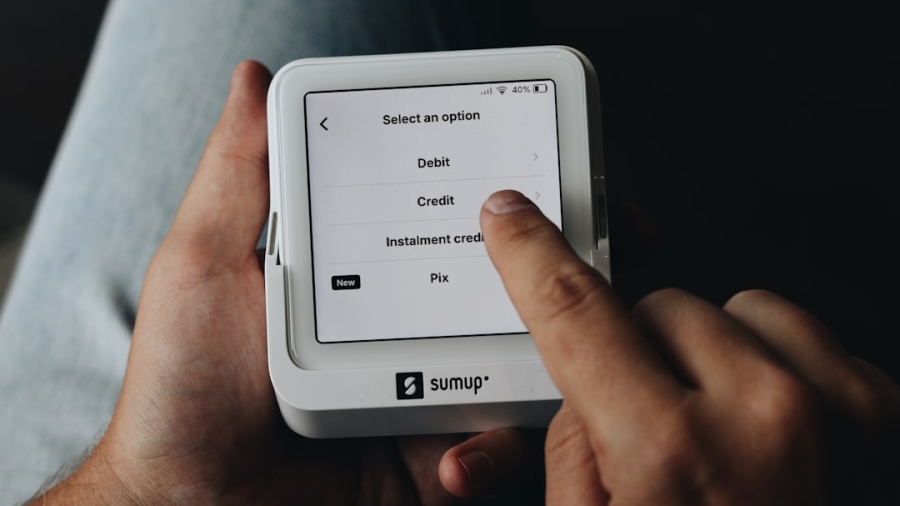As we step into 2024, the landscape of financial services is undergoing a profound transformation, largely driven by the principles of open banking. This innovative approach allows third-party developers to build applications and services around financial institutions, thereby fostering a more interconnected and user-centric financial ecosystem. Open banking is not merely a trend; it represents a fundamental shift in how consumers interact with their financial data and services.
By leveraging application programming interfaces (APIs), banks and financial institutions can share customer data with authorized third parties, enabling a seamless flow of information that enhances the overall banking experience. This paradigm shift is not only reshaping traditional banking practices but also empowering consumers to take control of their financial lives in unprecedented ways. The implications of open banking extend far beyond mere convenience; they touch on the very essence of consumer empowerment and choice.
In 2024, we are witnessing an era where consumers are no longer passive recipients of financial services but active participants in a dynamic marketplace. With the ability to access a plethora of financial products and services tailored to their specific needs, consumers can make informed decisions that align with their financial goals. This evolution is particularly significant in a world where digital transformation is accelerating, and consumers expect personalized experiences that cater to their unique circumstances.
As we delve deeper into the impact of open banking, it becomes clear that this movement is not just about technology; it is about redefining the relationship between consumers and financial institutions.
Key Takeaways
- Open Banking continues to revolutionize the financial industry in 2024, offering new opportunities for consumers and businesses alike.
- Open Banking provides consumers with a wider range of financial products and services, empowering them to make more informed choices and find the best deals.
- Open Banking enhances financial transparency by allowing consumers to access and share their financial data with authorized third-party providers, promoting better decision-making and accountability.
- Personalized financial services are on the rise thanks to Open Banking, as it enables financial institutions to tailor their offerings to individual consumer needs and preferences.
- Open Banking is driving fintech innovation by fostering collaboration between traditional financial institutions and tech-savvy startups, leading to the development of innovative products and services for consumers.
The Impact of Open Banking on Consumer Choice
Empowering Consumer Choice in the Financial Sector
Open banking has revolutionized the financial sector, providing consumers with an unprecedented array of options. With the rise of digital banking, individuals can now easily compare various financial products, from loans to investment opportunities, all at their fingertips. This newfound accessibility empowers consumers to make informed decisions based on their specific needs and preferences.
Fostering Healthy Competition and Innovation
No longer confined to the offerings of a single bank, individuals can explore a diverse range of services from multiple providers, fostering healthy competition within the industry. As a result, financial institutions are compelled to innovate and enhance their offerings to attract and retain customers, ultimately benefiting consumers through improved services and lower costs.
Democratizing Financial Services for All
The democratization of financial services through open banking has led to a more inclusive environment for consumers from all walks of life. Individuals who may have previously faced barriers to accessing traditional banking services can now leverage alternative solutions that cater to their unique circumstances. Fintech companies are emerging as key players in this space, offering tailored products designed for underserved populations. This shift not only broadens consumer choice but also promotes financial literacy and empowerment among those who may have felt marginalized by conventional banking practices.
A More Equitable Financial Landscape
As we continue to explore the impact of open banking on consumer choice, it becomes evident that this movement is reshaping the very fabric of the financial industry, creating a more equitable landscape for all.
How Open Banking is Improving Financial Transparency
One of the most significant advantages of open banking is its potential to enhance financial transparency for consumers. In 2024, individuals are increasingly demanding clarity regarding their financial transactions and the fees associated with various services. Open banking facilitates this transparency by allowing consumers to access their financial data in real-time, enabling them to track spending patterns, monitor account balances, and understand the costs associated with different products.
This level of insight empowers consumers to make informed decisions about their finances, ultimately leading to better money management and improved financial health. Furthermore, open banking encourages financial institutions to adopt more transparent practices in their operations. As banks share data with third-party providers, they are held accountable for their pricing structures and service offerings.
This increased scrutiny fosters a culture of transparency within the industry, compelling banks to clearly communicate fees, interest rates, and terms associated with their products. In turn, consumers can make more informed choices based on a comprehensive understanding of what they are signing up for. As we navigate through 2024, it is clear that open banking is not only enhancing individual financial literacy but also driving systemic changes within the industry that prioritize transparency and accountability.
The Rise of Personalized Financial Services through Open Banking
The advent of open banking has ushered in a new era of personalized financial services that cater specifically to individual consumer needs. In 2024, we are witnessing a surge in tailored offerings that leverage consumer data to create bespoke financial solutions. By analyzing spending habits, income patterns, and personal preferences, financial institutions can develop products that resonate with consumers on a deeper level.
This level of personalization not only enhances customer satisfaction but also fosters loyalty as consumers feel understood and valued by their financial service providers. Moreover, personalized financial services extend beyond mere product offerings; they encompass holistic financial management solutions that empower consumers to achieve their goals. For instance, budgeting apps integrated with open banking capabilities can provide real-time insights into spending habits while offering tailored recommendations for savings or investment opportunities.
This level of customization transforms the way individuals approach their finances, allowing them to set realistic goals and track progress over time. As we delve further into 2024, it becomes evident that open banking is not just about providing access to services; it is about creating meaningful connections between consumers and their financial journeys.
Open Banking and the Advancement of Fintech Innovation
The rise of open banking has catalyzed an unprecedented wave of fintech innovation that is reshaping the financial landscape in 2024. Fintech companies are leveraging open banking APIs to develop cutting-edge solutions that address specific consumer pain points while enhancing overall user experience. From mobile payment platforms to robo-advisors, these innovations are designed to streamline processes and provide consumers with greater control over their finances.
As traditional banks collaborate with fintech firms, we are witnessing a convergence of expertise that drives innovation forward, ultimately benefiting consumers through enhanced services. Additionally, open banking has created an environment ripe for experimentation and creativity within the fintech sector. Startups are emerging at an astonishing rate, each vying to offer unique solutions that cater to niche markets or address specific challenges faced by consumers.
This competitive landscape fosters a culture of continuous improvement as companies strive to differentiate themselves through innovative features and user-friendly interfaces. As we look ahead in 2024, it is clear that open banking is not just a catalyst for change; it is a driving force behind the evolution of fintech innovation that promises to redefine how we manage our finances.
The Role of Data Security and Privacy in Open Banking
Data Protection Regulations
Regulatory frameworks such as the General Data Protection Regulation (GDPR) in Europe have established stringent guidelines for data protection, ensuring that consumer rights are upheld in this digital landscape.
Advanced Cybersecurity Measures
Financial institutions are investing heavily in advanced cybersecurity measures to mitigate risks associated with data breaches or unauthorized access. This includes implementing robust encryption protocols, multi-factor authentication processes, and continuous monitoring systems designed to detect suspicious activity in real-time.
Prioritizing Data Security and Privacy
As we navigate through 2024, it is imperative for both consumers and providers to prioritize data security and privacy as foundational elements of the open banking ecosystem. By doing so, we can ensure that sensitive financial information is handled responsibly and securely by both banks and third-party providers.
The Future of Open Banking and Consumer Empowerment
Looking ahead, the future of open banking appears bright as it continues to empower consumers in ways previously thought impossible. In 2024, we are witnessing a shift towards greater consumer autonomy over personal finances as individuals gain access to tools and resources that enable them to make informed decisions. The ability to aggregate accounts from multiple banks into a single platform allows consumers to view their entire financial picture at a glance, facilitating better budgeting and planning strategies.
This newfound empowerment fosters a sense of ownership over one’s financial journey, encouraging individuals to take proactive steps toward achieving their goals. Furthermore, as open banking matures, we can expect an even greater emphasis on collaboration between traditional banks and fintech companies. This partnership will likely lead to the development of innovative solutions that address emerging consumer needs while maintaining high standards of security and privacy.
As technology continues to advance, we may see the integration of artificial intelligence and machine learning into open banking platforms, further enhancing personalization and efficiency in financial services. Ultimately, the future of open banking holds immense potential for consumer empowerment, paving the way for a more inclusive and dynamic financial ecosystem where individuals can thrive on their terms.
For those interested in the broader implications of technology on personal finance, a related article worth reading discusses the latest advancements in technology tools for consumers. Specifically, the article titled “Best Music Production Software: A Comprehensive Guide” explores how technological innovations are not only reshaping the banking sector but also other areas like music production. This guide provides insights into how software is empowering users to create, manage, and distribute music more efficiently, drawing parallels to how open banking platforms are enhancing consumer control over financial data. You can read more about these technological advancements here.
FAQs
What is open banking?
Open banking is a system that allows third-party financial service providers to access consumer banking, transaction, and other financial data from banks and non-bank financial institutions through the use of application programming interfaces (APIs).
How does open banking empower consumers?
Open banking empowers consumers by giving them more control over their financial data and the ability to securely share that data with third-party financial service providers. This allows consumers to access a wider range of financial products and services, compare offerings more easily, and manage their finances more effectively.
What are some examples of how open banking is empowering consumers in 2024?
In 2024, open banking is empowering consumers by enabling them to easily switch between financial service providers, access personalized financial advice and products, and securely share their financial data with trusted third parties to receive tailored offers and recommendations.
What are the potential risks of open banking for consumers?
Some potential risks of open banking for consumers include data privacy and security concerns, the potential for unauthorized access to financial data, and the risk of consumers being overwhelmed by the sheer volume of financial products and services available to them through open banking platforms.
How is open banking regulated to protect consumers?
Open banking is regulated in many countries to protect consumers through measures such as data protection laws, consumer consent requirements for sharing financial data, and security standards for the transmission and storage of financial information. Regulatory bodies also oversee the implementation and operation of open banking systems to ensure compliance with consumer protection regulations.



